NHMRC Research Projects
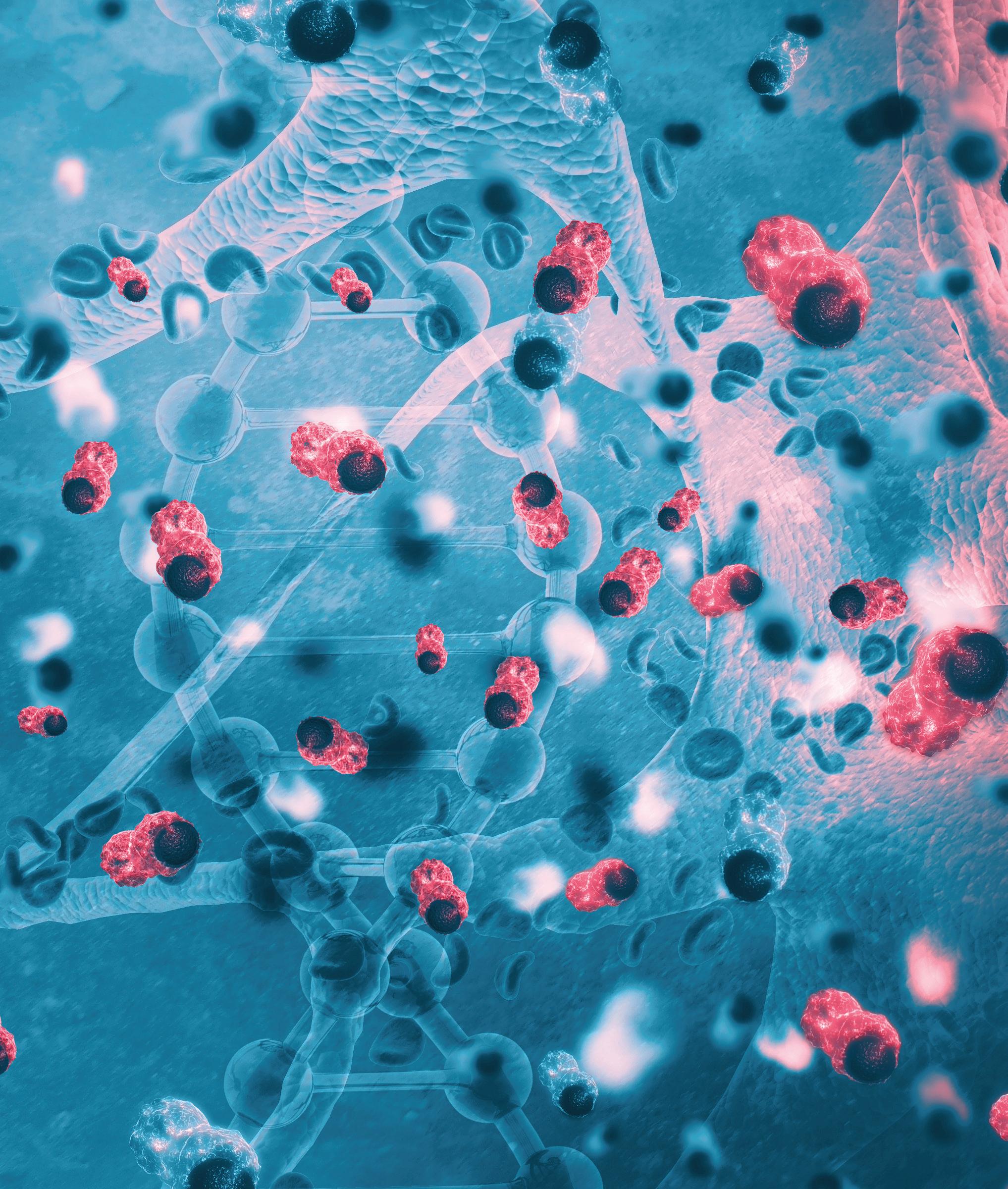

(Thirteenth
Showcasing significant projects that support the improvement of human health
Edition)
Publication title: 10 of the Best NHMRC—Thirteenth Edition

Published: July 2022
Publisher: National Health and Medical Research Council
NHMRC Publication reference: R58
Online version: www.nhmrc.gov.au/guidelines-publications/r58
ISSN online: 2651-8856
ISSN print: 2651-8848
Suggested citation: National Health and Medical Research Council Thirteenth Edition 10 of the Best NHMRC Research Projects Canberra: National Health and Medical Research Council
COPYRIGHT
© Commonwealth of Australia 2022
All material presented in this publication is provided under a Creative Commons Attribution 4.0 International licence (www.creativecommons.org.au), with the exception of the Commonwealth Coat of Arms, NHMRC logo and any content identified as being owned by third parties. The details of the relevant licence conditions are available on the Creative Commons website (www.creativecommons.org. au), as is the full legal code for the CC BY 4.0 International licence.
ATTRIBUTION
Creative Commons Attribution 4.0 International Licence is a standard form licence agreement that allows you to copy, distribute, transmit and adapt this publication provided that you attribute the work. The NHMRC’s preference is that you attribute this publication (and any material sourced from it) using the following wording: Source: National Health and Medical Research Council.
USE OF IMAGES
Unless otherwise stated, all images (including background images, icons and illustrations) are copyrighted by their original owners.
CONTACT US To obtain information regarding NHMRC publications or submit a copyright request, contact: E: communications@nhmrc.gov.au
P: (02) 6217 9000
Cover Images: iStock










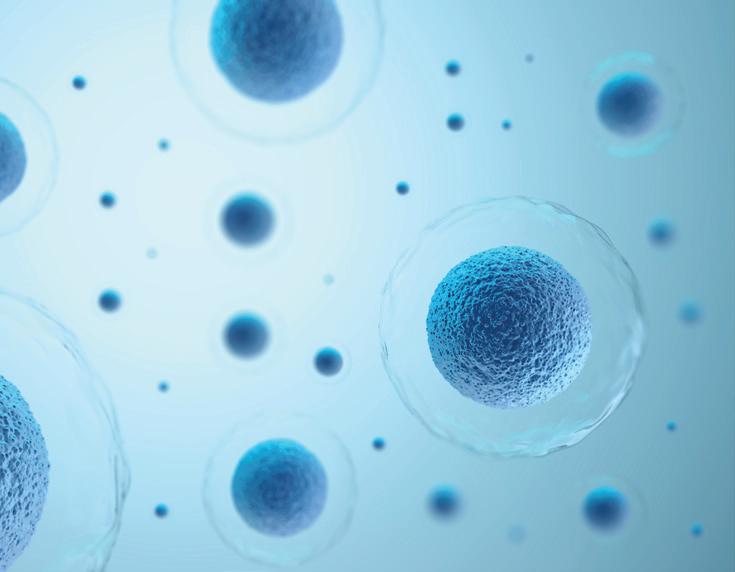


Showcasing significant projects that support the improvement of human health (Thirteenth Edition) NHMRC Research Projects CEO FOREWORD 1 LESSONS FROM THE BEST TO IMPROVE INDIGENOUS HEALTH SERVICES: A COLLABORATIVE LEARNING APPROACH UNRAVELLING GENOMES TO FIND AN ANSWER HELPING CHILDREN GET THE BEST START TO LIFE BORN TOO SOON – A BETTER LIFE FOR PRETERM BABIES HEALTHIER HEARTS IN THE TROPICAL NORTH METAL COMPLEXES FOR THE TREATMENT OF AGE-RELATED DISEASES OF THE BRAIN MIND THE GAP – FILLING IN THE MISSING EVIDENCE FOR MASSIVE BLOOD TRANSFUSION POLICY SMILES SAVED WITH A MAJOR IMPROVEMENT IN DENTAL HEALTH OF YOUNG ABORIGINAL CHILDREN IMPROVING CARER WELLBEING AND EMPOWERING INDIGENOUS COMMUNITIES 2 4 6 8 10 12 14 16 20 DEVELOPING IMMUNITY TO CANCER 18
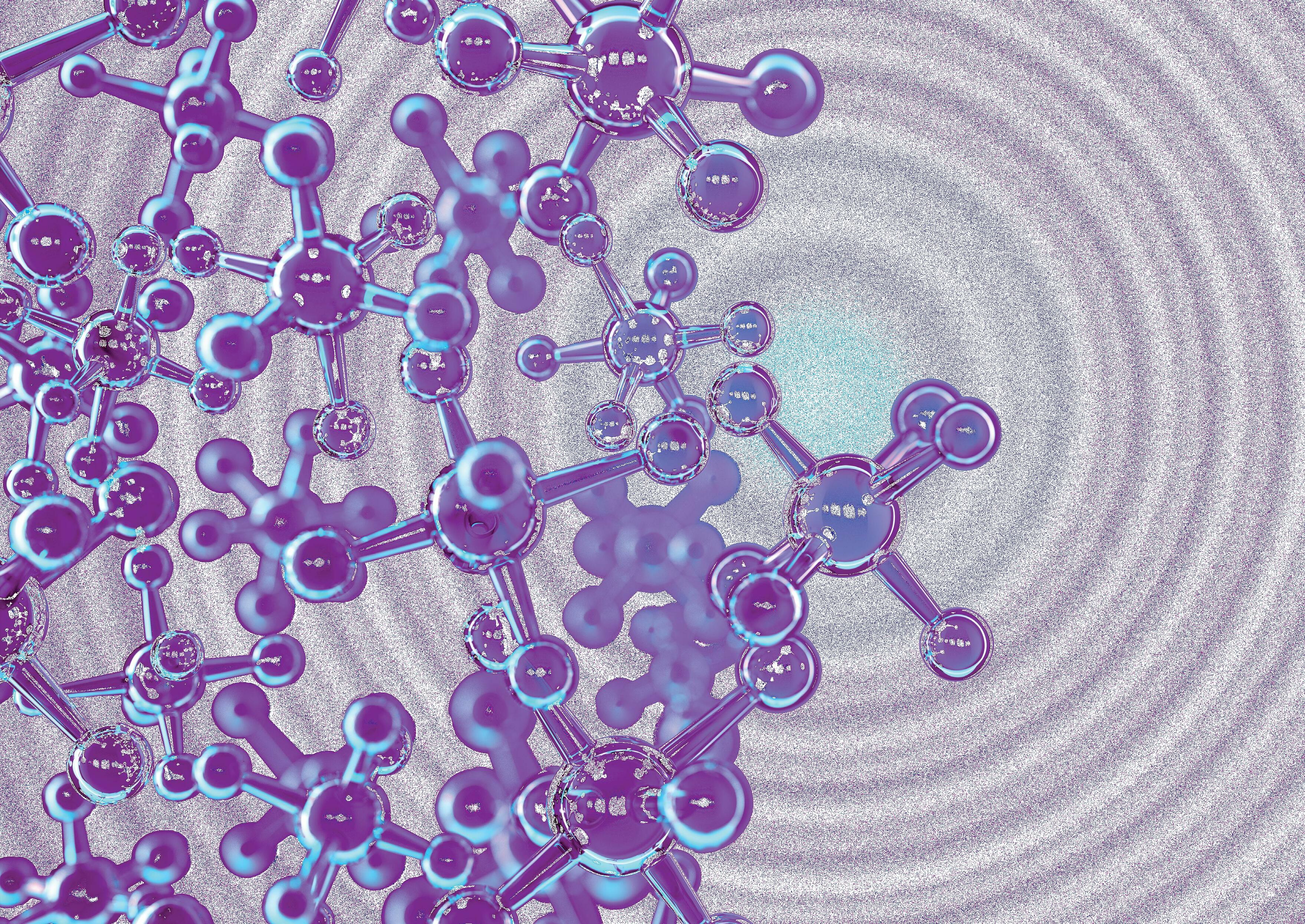
Photo: iStock
CEO FOREWORD

Welcome to NHMRC’s 10 of the Best – Thirteenth Edition, a tribute to the researchers and their teams around Australia who are tackling the health challenges that we face from birth to later life.
The disruptive events over the last few years have ignited an appreciation of science and shown us the importance of long-term national investment in health and medical research.
As we move on from the acute phase of the COVID-19 pandemic, we can be reassured that Australia has highly skilled and dedicated researchers working to improve health and wellbeing today and for future generations.
The projects featured here exemplify hundreds of successful high-quality projects funded each year by NHMRC. A short list of final reports from more than 900 completed grants was reviewed by a panel for scientific merit to select the 10 of the Best.
In this edition, we present the stories of researchers helping children with ADHD and autism to manage sleep, solving lifethreatening childhood autoimmune diseases through genomics, and improving lung health of preterm babies. With cancer the leading cause of death by disease in children, we report on a project developing personalised immunotherapy for the cancers that particularly affect children and young people, such as leukaemia and melanoma, offering the potential for life-changing cancer control.
Many researchers are driven to ensure health equity for all Australians. Aboriginal and Torres Strait Islander people and people living in rural and remote areas of Australia can have specific health needs and poorer access to health care. This edition of 10 of the Best highlights several research projects that strive to work in partnership with Aboriginal leaders and health care providers to empower communities to improve their health and wellbeing.
The projects showcased in this edition are just a small sample of the many outstanding projects funded each year by NHMRC.
Whether they work in the laboratory, the clinic or the community, a common theme throughout this edition of 10 of the Best is the motivation of the researchers to help people live healthy lives by harnessing the power of science to understand and overcome today’s health challenges. The future is bright for health and medical research and the generations who will benefit from their work.
Professor Anne Kelso AO CEO

1
LESSONS FROM THE BEST TO IMPROVE INDIGENOUS HEALTH SERVICES: A COLLABORATIVE LEARNING APPROACH



Professor Sarah Larkins
Professor Sarah Larkins has focused on improving equity in health care services for rural, remote and Indigenous populations since a medical education placement in the Northern Territory highlighted the tremendous inequities in health care access in the region.
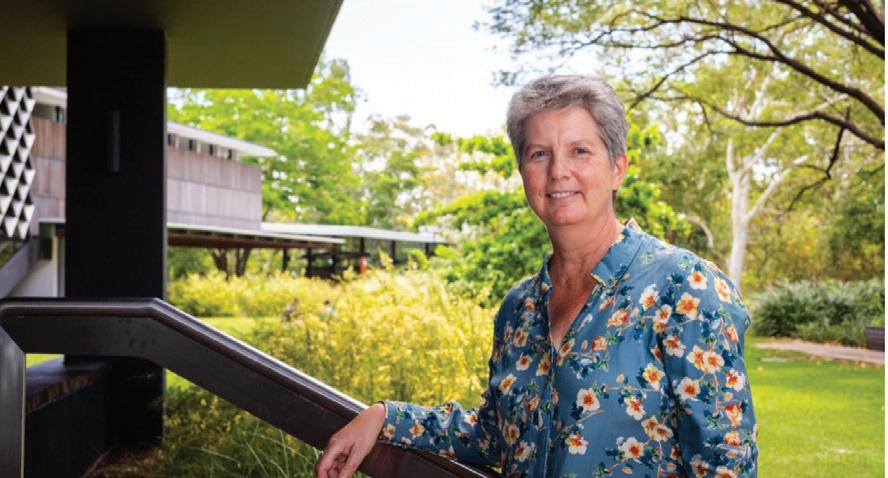
TEAM MEMBERS
CIs and AIs
Dr Veronica Matthews
Professor Ross Bailie
Professor Sandra Thompson
Ms Kerry Copley
Mr Dallas Leon
Professor Komla Tsey
Dr Elizabeth Moore
Dr Ruyomuro Kwedza
Ms Jeanette Ward
Dr Christine Connors
Professor Jacinta Elston
Associate Professor
Catrina Felton-Busch
Dr Paul Burgess
Research team
Dr Cindy Woods
Dr Karen Carlisle
Ms Nalita Turner
Dr Michelle Redman-MacLaren
Dr Judy Taylor
Ms Tania Patrao
Mr Maxwell Mitropolous
Ms Moana Tane
JAMES COOK UNIVERSITY
PROJECT GRANT
$617,428 2014–2016
Photo: iStock NHMRC 10 OF THE BEST 2
Photo supplied by James Cook University
Now living and working on Bindal and Wulgurukaba country in Townsville, Professor Larkins is a general practitioner and health systems researcher, and is currently the Dean of the College of Medicine and Dentistry at James Cook University.
Professor Larkins and her co-investigators were awarded an NHMRC Project Grant in 2014 to understand why health care services had dramatically improved in performance in Continuous Quality Improvement (CQI) audits.
CQI is a quality management process that encourages team members to continuously evaluate whether there are any areas for improvement within their practice. CQI in primary health care is essential to improve processes, safety and patient care. Moreover, implementing CQI audits in rural and remote health care can be crucial in helping achieve equality in health and life expectancy for Aboriginal and Torres Strait Islander peoples.
‘Understanding the variability in response to CQI initiatives is an important component in lifting the quality of care overall and improving Indigenous health outcomes,’ Professor Larkins explained.
The research project ‘Lessons from the best to better the rest’ formed participatory learning communities with six Aboriginal and Torres Strait Islander Primary Health Care Services in North Queensland, Northern Territory and Western Australia that had demonstrated high improvement in quality of care in response to CQI initiatives. Researchers worked with service providers, managers and service users to identify the ‘secrets of success’. The project revealed that complex workforce, organisational and resourcing factors, alongside the wider community context, were the reasons these centres had
implemented CQI systems and processes better than others.
Professor Larkins praised the involvement of the service providers, managers and clients of the primary health care centres that took part in her project.
‘This collaborative co-designed work and subsequent learnings would simply not have been possible without the fantastic contributions of these services and communities,’ she said.
The results from this practical, on-the-ground manner of research led to several mechanisms for potential impact on human health. Besides direct improvements in the quality of health care and clinical best practice, the project also provided a better understanding of cultural appropriateness and other measures of accessibility and acceptability that are likely to deliver health gains to communities in rural and remote regions.
‘This program of research has delivered a range of process and outcome benefits that we are building on, with further work exploring how we can use these findings to help other “striving” services to improve their response to CQI activities,’ said Professor Larkins.
Professor Larkins used an active knowledge translation strategy in her project. Her team took a two-way learning approach by conducting faceto-face visits to discuss findings at every primary health care centre and producing one-page briefs on the implications of their findings for policymakers, health service providers and clients. The findings were widely disseminated at a variety of peer review conferences, with staff from three of the health care centres giving presentations about their involvement –a testament to the collaborative nature of this project.
A recent photo of the current LEAP project team members, also part of the CRE-STRIDE, a flow on project from Lessons from the Best. Team Members (L to R): Dr Karen Carlisle, Dr Michelle Redman-MacLaren, Associate Professor Catrina Felton-Busch, Ms Kristy Clancy, Dr Judy Taylor, Ms Kris Vine, Professor Sarah Larkins, Ms Melody Muscat, Dr Veronica Matthews, Ms Talah Laurie and Ms Nalita Turner.
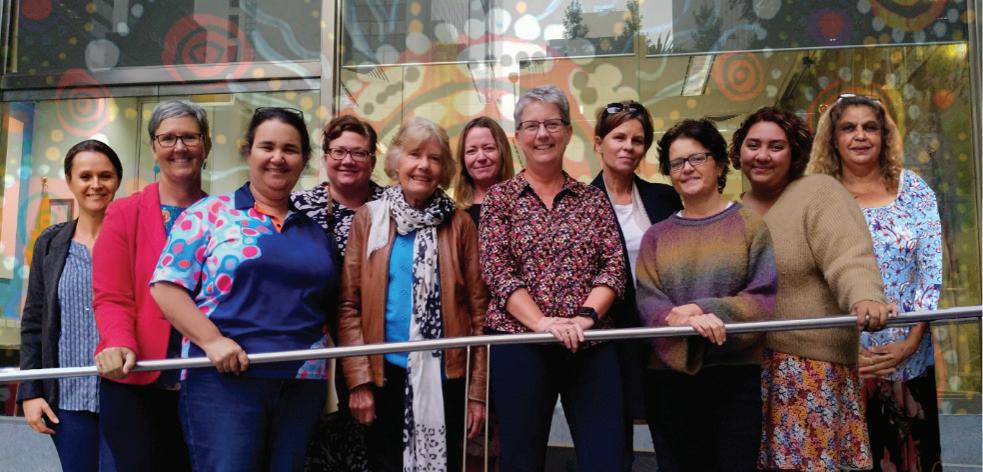
Photo supplied by James Cook University.
NEXT STEPS
Professor Larkins is currently leading the ‘Leveraging Effective Ambulatory Practices’ (LEAP) project, which builds on the findings of her research program to understand how to improve the quality of Indigenous primary health care services. Partnering with eight Aboriginal and Torres Strait Islander primary health care centres, Professor Larkins and her team have co-created a learning community to implement both peer-to-peer and technical support. She is also involved in a study, ‘Women’s action for Mums and Bubs (WOMB)’, which aims to test the effectiveness of community women’s groups to improve the quality of Aboriginal and Torres Strait Islander maternal and child health care outcomes.
REFERENCES
Edwards PJ et al. ‘Maximizing your investment in EHR: Utilizing EHRs to inform continuous quality improvement’, Journal of Healthcare Information Management, 2008, 22(1):32-7.
3
UNRAVELLING GENOMES TO FIND AN ANSWER
Professor Christopher Goodnow
GARVAN INSTITUTE OF MEDICAL RESEARCH AND UNIVERSITY OF NEW SOUTH WALES
RESEARCH FELLOWSHIPS
$507,202 2015–2018
TEAM MEMBERS
Professor Maria Craig
Associate Professor Paul Gray
Associate Professor Owen Siggs
Ms Amanda Russell
Dr Deborah Burnett
Dr Davinder Singh-Grewal
Autoimmune diseases account for one of the largest burdens of chronic disease on our health system. According to Professor Chris Goodnow, there are more than 100 autoimmune diseases that collectively affect 10 per cent of people.
‘Yet, I could not find an explanation for why these diseases occurred in any scientific literature, let alone treatments that were targeted to the root cause and not to suppressing or poisoning the immune system broadly.’
While there is a rapidly expanding list of targeted drugs available to treat autoimmune disease, most only work in a subset of patients.
Physicians cannot yet predict which drug will be most effective for an individual, forcing a trialand-error journey and increasing the likelihood of permanent disability and high financial cost.
‘From the start of my scientific and veterinary training I was fascinated by the cardinal feature of our immune system: its ability to learn to distinguish between “foreign” and “self” with exquisite specificity,’ Professor Goodnow said.
‘Particularly attractive was that the mechanism behind this learning system was a mystery, yet failures of the system led to devastating human autoimmune diseases and blood cancers.’
Building on his previous research elucidating immune tolerance checkpoint genes and mechanisms, Professor Goodnow’s NHMRCfunded Research Fellowship project brought great scientific advances in human genome sequencing to solve life-threatening childhood autoimmune diseases.

‘Laboratory studies, including analysis of mouse “avatars” for these children, revealed the mechanisms driving autoimmune disease because of these single gene changes,’ Professor Goodnow explained.
Professor Goodnow’s research has pioneered genome-wide analysis of the DNA sequences controlling the immune system.
He joined the faculty at the Australian National University in 1997 as Professor and the founding Director of the Medical Genome Centre and led its development into a major national research facility – the Australian Phenomics Facility.
His team’s research has not only explained the mechanism causing the immune disease but also identified a targeted treatment. This has proven to be highly effective at stopping severe symptoms and returning the children and their families to a healthy childhood.
Professor Goodnow is currently the Executive Director of the Garvan Institute of Medical Research, Chair of The Bill and Patricia Ritchie Foundation, Head of the Immunogenomics Laboratory at Garvan and Director of the Cellular Genomics Futures Institute at the University of New South Wales.
Dr Joanne Reed, Dr Deborah Burnett and Professor Goodnow.
Photo supplied by Professor Chris Goodnow
NHMRC 10 OF THE BEST 4
NEXT STEPS
Over the past decade, there have been important advances in genome-guided precision medicine for severe autoimmune diseases. Professor Goodnow’s research aims to extend the immunogenetic approach for targeted, more effective treatment of all people with autoimmune disease.
‘The ability to unravel someone’s whole genome did not exist five years ago but, as the technology has emerged, it has allowed us to continue expanding on a critical area of research,’ said Professor Goodnow.
His research has resulted in paradigm shifts in his field and he will continue to develop his research supported by his current NHMRC Investigator Grant.

The analysis of mouse avatars has been referred to by some as an ‘alternate reality’, increasing our knowledge about the immune system and how it operates.
Photo: iStock 5
Professor Harriet Hiscock
Professor Harriet Hiscock is a paediatrician researcher at the Murdoch Children’s Research Institute. Her work focuses on keeping children out of hospital, reducing low value care and improving access to and quality of care – especially mental health care.
Professor Hiscock has always been passionate about helping children to ensure they have the best start to life. One in five children is affected by behavioural and developmental problems, yet many of these problems go undetected and untreated.
TEAM MEMBERS
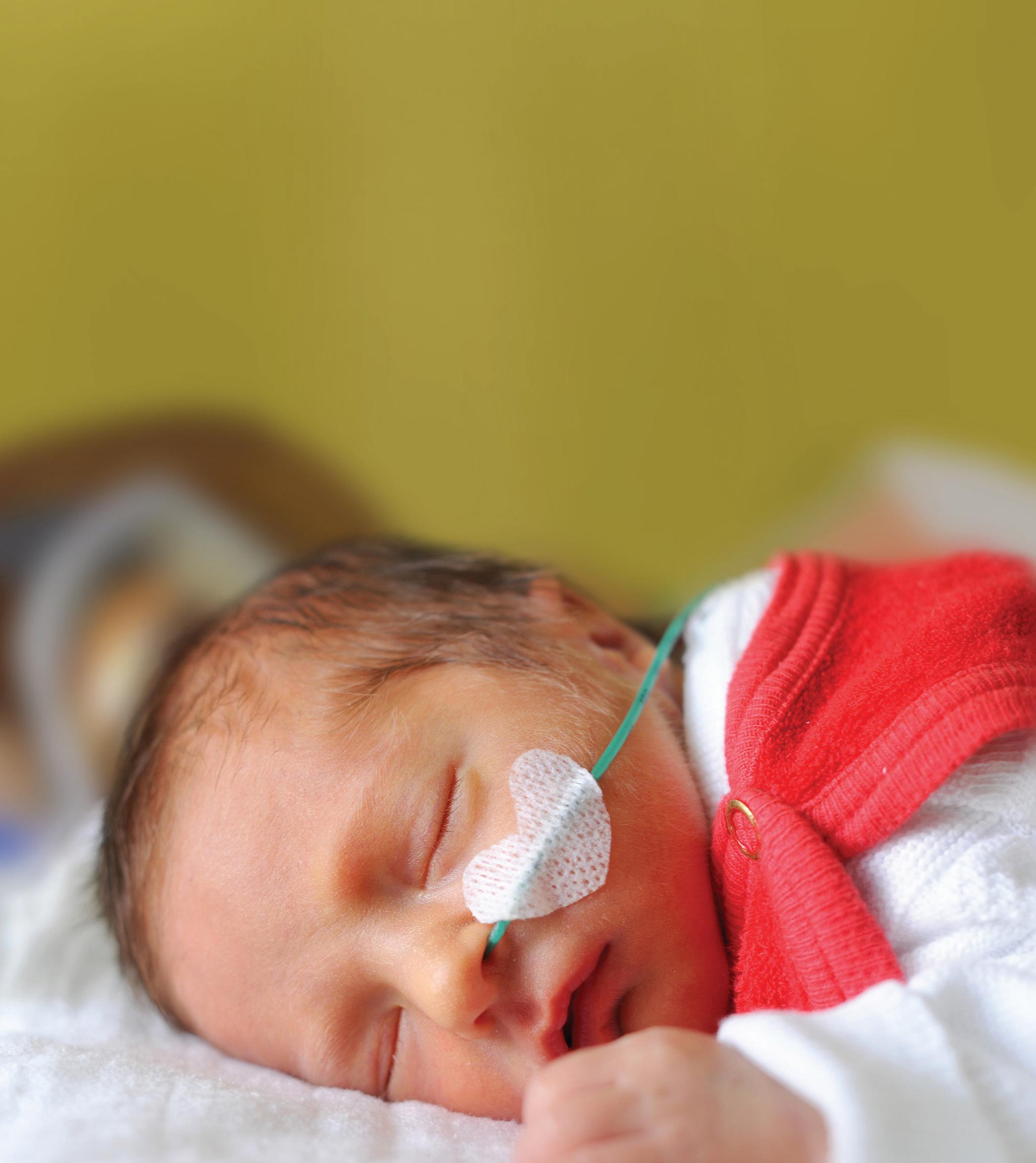
MURDOCH CHILDREN’S RESEARCH INSTITUTE CAREER DEVELOPMENT FELLOWSHIP $279,896 2014–2017
Associate Professor
Dr
Associate Professor
Ms
Associate
Ms
Ms
Dr
HELPING CHILDREN GET THE BEST START TO LIFE
Emma Sciberras
Melissa Mulraney
Daryl Efron
Kate Paton
Professor Kim Dalziel
Rachel Neely
Rachel Pelly
Shaoke Lei
Photo: iStock NHMRC 10 OF THE BEST 6
Recent statistics show that only nine to 27 per cent of children with mental health problems access Medicare Benefits Schedule (MBS)-rebated care. Girls, younger children and those from more disadvantaged families or families speaking a language other than English are even less likely to receive care.1
Professor Hiscock’s NHMRC Career Development Fellowship focused on developing and trialling brief and tailored interventions to improve sleep in children with attention deficit hyperactivity disorder (Sleeping Sound with ADHD) and autism (Sleeping Sound with Autism). The trials involved two face-to-face consultations with a paediatrician or psychologist and a follow-up phone call.
Professor Hiscock explained how sleep is essential for all of us but, in children with ADHD or autism, missing out on a good night’s sleep can worsen their behaviour and their emotional symptoms. For children with ADHD, their focus, concentration and learning in the school setting can suffer due to a lack of sleep.
‘A lack of sleep will impact their social and emotional regulation, their behaviour and their quality of life,’ Professor Hiscock said.
‘After two sessions and a phone call, parents were seeing improvements in their child’s sleep, which had flow-on benefits to the parents’ mental health. The parents would say how the whole family is functioning better, that they were a happier household, and their child is happier to get up and go to school.’
Both the trials were hugely successful: the children loved being a part of it and the parents really liked it too because it did not involve any medication.
Professor Hiscock said that seeing her colleagues grasp this intervention and incorporate it into their day-to-day clinical work was very rewarding.
‘As a practitioner you can help one person at a time, one child, one family. But when you do trials, you are helping hundreds of kids at a time.’
Professor Hiscock is now driven to make changes at a system level by directing her focus to health services research, with a particular interest in mental health.
‘Health services research is where you can hopefully change a system, so you are helping thousands at a time.’
1 Hiscock H et al. ‘Use and predictors of health services among Australian children with mental health problems: A national prospective study’, Australian Journal of Psychology, 2020, 72(3):1–10.
NEXT STEPS
Professor Hiscock and her team have commenced several research programs including developing integrated health and social care hubs that offer social, medical and allied health services. These hubs will help to support children and their families by earlier detection and response to social determinants of mental health.
Another program is placing paediatricians in general practices to improve GP confidence and competence in the care of children. This trial aims to keep children out of hospital and improve parental preference for GP care. Paediatricians are supporting the GPs to be proactive and provide timely solutions in an area of medicine where waiting lists to see a specialist can be 6–12 months.

7
Photo supplied by Professor Harriet Hiscock
BORN TOO SOON – A BETTER LIFE FOR PRETERM BABIES
Associate Professor Shannon Simpson
A major achievement for Associate Professor Shannon Simpson was the recent establishment of PELICAN (Prematurity’s Effects on the Lungs In Children and Adults Network), which she co chairs with Dr Jenny Hallberg from the Karolinska Institute in Sweden.
‘In ten years’ time, somebody might ask what I’m most proud of and I suspect it might be this,’ said Associate Professor Simpson.
PELICAN is a data sharing consortium for lung health data from survivors of preterm birth. A lot of hard work has been put into this project to bring researchers from all over the world to work together for the same outcome – to understand the lung health trajectory after preterm birth and find targets that could be tested in clinical trials.
Besides leading the PELICAN Clinical Research Collaboration, Associate Professor Simpson is a Senior Research Fellow and Co-Head of Children’s Lung Health at the Telethon Kids Institute in Western Australia. She is also head of Children’s Lung Health at the Wal-yan Respiratory Research Centre and leads a multi-disciplinary research program that aims to reduce the burden of lung disease in survivors of preterm birth.
With a passion for and devotion to improving lung health outcomes for preterm babies, she was a finalist in the 2021 Western Australian of the Year Awards and winner of the community/social enterprise category in the 2019 Business News 40under40 awards.
‘I have been really lucky to have some awesome people who are all on the same page as me, and who work really hard to make a difference for babies born preterm,’ said Associate Professor Simpson.
During her PhD, Associate Professor Simpson was fascinated by marsupials, born at a comparatively early stage of gestation but able to survive and thrive despite underdeveloped lungs.
In contrast, before the 1990s, most babies born very preterm (less than 32 weeks gestation) were unlikely to survive.
Today, more than 85 per cent of babies born very preterm in Australia survive. 2
While survival rates of children born preterm have improved, these children often have ongoing lung problems. For example, more than half of children
2 Chow SSW et al. Report of the Australian and New Zealand Neonatal Network 2013. Sydney: ANZNN; 2015.
CURTIN UNIVERSITY AND TELETHON KIDS INSTITUTE
EARLY CAREER FELLOWSHIP
$316,450 2014–2017
TEAM MEMBERS
Dr Andrew Wilson
Dr Elizabeth Smith
Ms Naomi Hemy
Ms Tiffany Bradshaw
Ms Rubi Ni Chin
Ms Rhea Urs
Ms Denby Evans
Dr James Gibbons
Dr Nada Townsi
born preterm suffer from respiratory symptoms through childhood.
‘My research has explored the ongoing effects of premature birth on the lungs throughout life and we have been able to follow the progress these children have made from their first encounter as babies in an intensive care unit through to their teenage years,’ said Associate Professor Simpson.
A turning point in her journey of discovery happened when her team published an article in The Lancet Child & Adolescent Health showing that the lung function of preterm babies moved further away from normal through their childhood years. Potentially devastating news for families, this observation opened an entirely new field of research. Associate Professor Simpson’s team has since provided the first insights into the mechanisms potentially underpinning lung disease associated with preterm birth and is now conducting the first clinical trial to improve childhood lung health for preterm birth survivors.
NHMRC 10 OF THE BEST 8
Associate Professor Simpson started her journey with an NHMRC Early Career Fellowship. She says that the fellowship ‘gives you the opportunity to go from working on other, more senior, investigators’ grants to developing your own ideas’.

‘My advice to researchers who are starting out is to make sure you have a really good mentor in place. It is really important to have people batting for you!’
NEXT STEPS
Associate Professor Simpson and her team are further pursuing the work of the PELICAN clinical research collaboration. They will explore the mechanisms underpinning poor lung health after preterm birth and conduct interventions to improve lung health in those with preterm associated lung disease. With the passion Associate Professor Simpson and her team have for their research, it will be exciting to see the outcome.
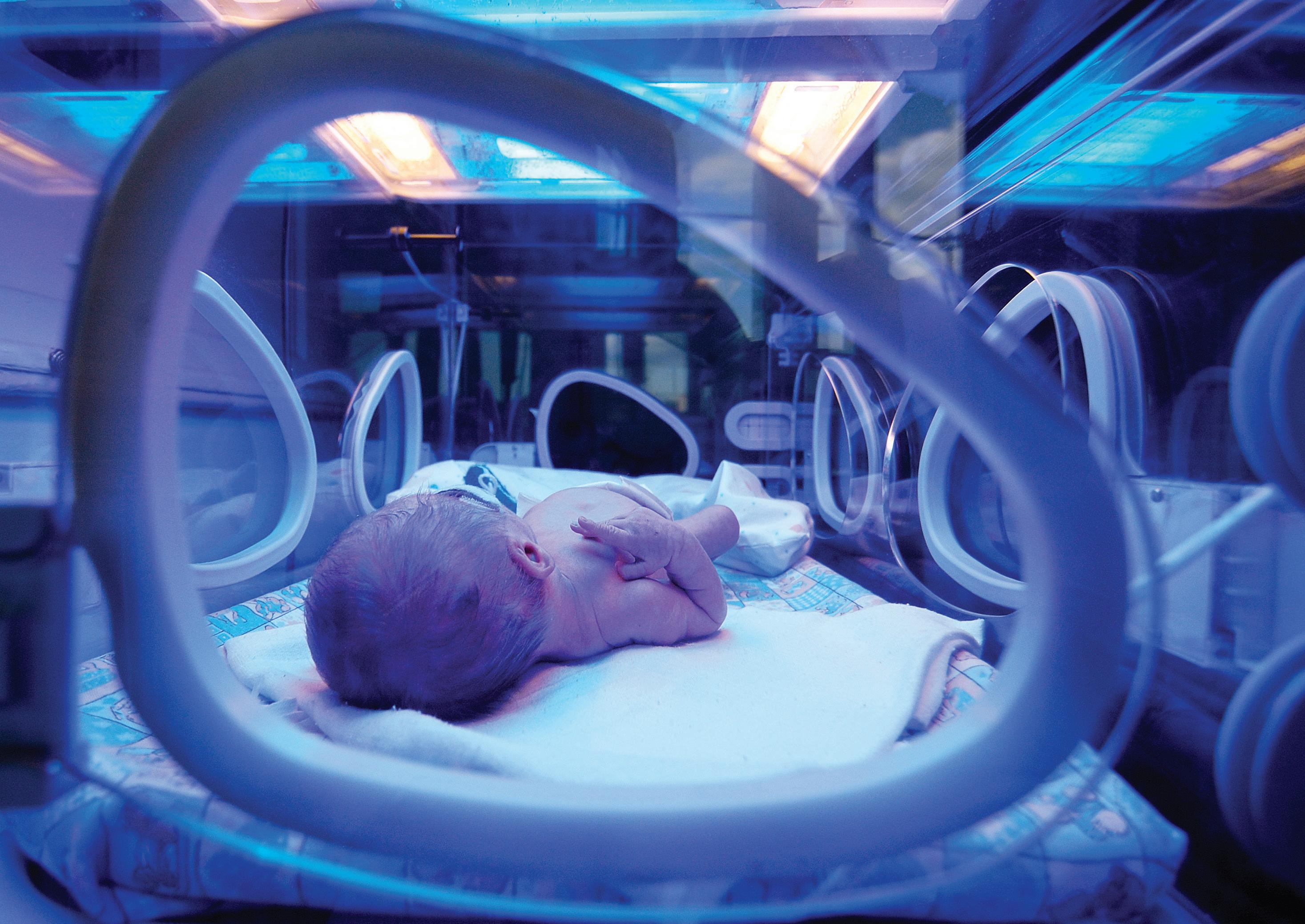 Photo supplied by Associate Professor Shannon Simpson
Photo supplied by Associate Professor Shannon Simpson
9
Photo:
iStock
HEALTHIER HEARTS IN THE TROPICAL NORTH

Professor Anna Ralph
Professor Anna Ralph is a practising medical specialist and leads the Global and Tropical Health division at Menzies School of Health Research in Darwin.
Ms Vicki
Ms Vicki
Dr Joshua
Dr James Marangou Dr Bianca Middleton Dr Trisasi Lestari Dr Chris
Dr Teresa Wozniak Dr Marita Hefler Dr Tina
Professor
Professor
Professor
MENZIES
OF HEALTH RESEARCH TRANSLATING RESEARCH INTO PRACTICE (TRIP) FELLOWSHIP $178,158 2016–2017
TEAM MEMBERS
Wade
Kerrigan
Francis
Lowbridge
Noutsos
Bart Currie
Alan Cass
Jonathan Carapetis
SCHOOL
Photo: iStock NHMRC 10 OF THE BEST 10
‘I am motivated by a desire for better equity in health, by unsolved questions and by inspirational mentors. I wanted to work in Indigenous health since I was a teenager,’ said Professor Ralph.
Acute rheumatic fever (ARF) is an autoimmune response to streptococcal infection, which can cause permanent heart damage called rheumatic heart disease (RHD). It is a serious disease, causing premature illness and death. Despite being preventable, high rates continue to occur in Australian Indigenous communities. Prevention can be achieved with regular penicillin injections, but there are many barriers to accessing treatment and those needing the injections frequently miss doses.
‘If no further action is taken to address RHD, over 10,000 Aboriginal and Torres Strait Islander people are likely to develop RHD or ARF by 2031.
Of these, about 1,300 will need heart surgery and over 500 will die. The total cost to the community for the associated medical care could exceed $300 million,’ said Professor Ralph.
If ARF can be detected earlier, ‘secondary prevention’ treatment can be appropriately commenced and RHD can be avoided, or at least mitigated. RHD shares its origins with many other transmissible diseases of disadvantage. Thus, steps to reduce RHD rates will not only reduce suffering and health care costs but will also have wider ramifications for the treatment of disease in affected communities.
‘Supported by an NHMRC Translating Research into Practice (TRIP) Fellowship, my research program has helped to close the evidence-practice gap by forming partnerships to effectively roll out rheumatic fever prevention strategies in clinics across the Northern Territory,’ said Professor Ralph.
‘Findings from an RHD trial I co-led have been incorporated into the draft “Endgame Strategy” for RHD elimination and new diagnostic categories for ARF that I have developed are now being appropriately applied, contributing to improved detection of ARF and earlier commencement of protective treatment.’
The ARF Diagnosis App developed by Professor Ralph and her team has been shown to help clinicians who are often unfamiliar with ARF. Moreover, the National ARF and RHD Clinical Practice Guidelines that she co-edited have been downloaded more than 25,000 times and provide a definitive resource to support clinicians managing this condition.

NEXT STEPS
Professor Ralph sees research as a great privilege in building networks and collaborations, understanding community priorities, learning what community-driven research really means and learning from Aboriginal communities about how they want projects to be implemented.
Professor Ralph wants to see a paradigm shift in our health systems in order to provide the care that Aboriginal people require and she believes this needs to come from health systems research with First Nations leadership.
‘Collectively, this work brings us closer to being able to recognise ARF better, get people onto treatment sooner, and protect children and young adults from the development of permanent heart disease.’
Photo supplied by Menzies School of Health Research
11
METAL COMPLEXES FOR THE TREATMENT OF AGE-RELATED DISEASES OF THE BRAIN
Dr Jeffrey Liddell
running experiments to answer those questions,’ said Dr Liddell.
‘But research needs to be pragmatic and seek to address questions with serious health implications.’
Dr Liddell’s expertise is in glial cell biology, examining how these normally supportive cells in the brain can contribute to neurodegeneration and how they can be therapeutically targeted to either bolster their beneficial activities or impede their pathological toxicity.
Dr Jeffrey Liddell from the University of Melbourne is a mid-career neurobiologist with an interest in neurodegenerative diseases and understanding their underlying causes.
Dr Liddell joined an interdisciplinary research program at an incredibly exciting stage, when one of the lead compounds in development, CuII(atsm), showed strong benefits in animal models of multiple neurodegenerative diseases. The team had an effective drug but did not know how it worked.
‘For Parkinson’s disease, Alzheimer’s disease and motor neurone disease, the causes are not known. The fact that we have a drug that is effective in animal models of these diseases gives us the very
UNIVERSITY OF MELBOURNE
TEAM MEMBERS
Associate Professor Peter Crouch
Associate Professor Anthony White
EARLY CAREER FELLOWSHIP
$353,378 2013–2017
Professor Paul Donnelly Associate Professor Katja Kanninen Dr James Hilton Dr Kai Kysenius Professor Ashley Bush
real possibility to uncover key mechanisms driving these diseases. The more we can learn about the drug CuII(atsm), the more we can learn about causes of these diseases,’ said Dr Liddell.
The most relevant disease context for this research is motor neurone disease (MND). The average life expectancy after diagnosis of MND is 2.5 years and the total cost of MND to Australia in 2015 was $2.37 billion. 3 MND prevalence and mortality rates in Australia have approximately doubled in the last three decades. 4
Dr Liddell was awarded an NHMRC Early Career Fellowship to research the mechanism of action of CuII(atsm) and the impact it had on specific cell types in the brain. The team found that CuII(atsm) preferentially releases its bound copper in diseaseaffected regions of the brain and exerts distinct protective effects when copper is bound or unbound.
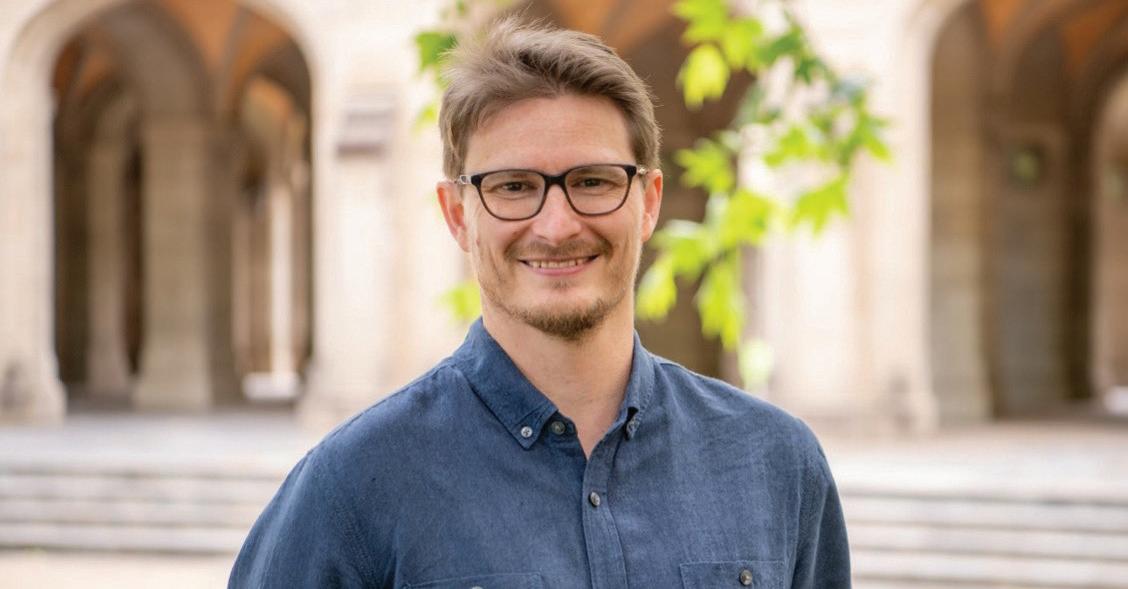
‘I was lucky that NHMRC funding came along and highly supported our research,’ said Dr Liddell.
‘My primary motivation is my love of science. I love the process of posing questions and designing and 3 Deloitte Access Economics ‘Economic analysis of motor neurone disease in Australia. A report for Motor Neurone Disease Australia’e Access Economics, 2015, Canberra. 4 Ibid.
Photo supplied by Dr Jeffrey Liddell
NHMRC 10 OF THE BEST 12
The research has since demonstrated that CuII(atsm) exhibits strong efficacy in animal models of Parkinson’s disease, stroke, sepsis and MND, which provided the rationale to drive CuII(atsm) through to clinical assessment. Phase I clinical trials with both MND and Parkinson’s disease patients generated very promising effects and Phase II/III trials in motor neurone disease patients have recently concluded.
‘Passing phase I trials mean that the drug should be safe for human administration. Surprisingly these small trials also produced encouraging results for the efficacy of the drug.
‘These translational outcomes are the best possible result for a basic science research team.’
NEXT STEPS
‘It is incredibly fulfilling to see that our research is now translating to the clinic, with the potential to make tangible and significant impacts upon the lives of people afflicted with serious diseases and their families.’
So far, there are no effective treatments for MND. Dr Liddell’s team is actively investigating other neurodegenerative conditions, which may share underlying causes and be treatable with CuII(atsm).

13
‘My advice for any early-career researcher is that they follow their passion. I love doing research but it is hard work and, if you are not driven internally, it won’t be fun.’
Photo: iStock
MIND THE GAP – FILLING IN THE MISSING EVIDENCE FOR MASSIVE BLOOD TRANSFUSION POLICY

Professor Jamie Cooper AO
Professor Jamie Cooper AO is the Sir John Monash Distinguished Professor in the School of Public Health and Preventive Medicine at Monash University and Senior Specialist in Intensive Care at The Alfred Hospital in Melbourne.
Professor Cooper’s Partnership Project focused on improving outcomes for patients with critical bleeding requiring massive blood transfusion.
The Patient Blood Management Guidelines (2011), published by the National Blood Authority (NBA), acknowledges there is a lack of evidence underpinning massive blood transfusion policy in Australia.
MONASH UNIVERSITY
TEAM MEMBERS
Associate Professor Zoe McQuilten
Professor Erica Wood
Professor Peter Cameron
Professor James Isbister
Professor Craig French
Professor Simon Stanworth
Professor Claire McLintock
PARTNERSHIP
PROJECT $877,787 2014–2017
Dr Amanda Zatta
Dr Anna Barker
Associate Professor Rosemary Sparrow
Mrs Helen Haysom
Dr Cameron Wellard
Mr Neil Waters
Photo: iStock NHMRC 10 OF THE BEST 14
According to the Australian Red Cross Lifeblood, ‘massive transfusion’ in adults is defined as the replacement of greater than 1 blood volume in 24 hours or greater than 50 per cent of blood volume in four hours. Adult blood volume is approximately 70 mL per kg.
To develop such a policy, robust evidence is needed to understand how much and what proportion of the four main blood components (plasma, red blood cells, white blood cells and platelets) to give patients when things go wrong.
Professor Cooper and his Partnership Project team from Monash University established a network of hospitals, using patient data to fill the missing gaps in the evidence base for massive blood transfusion policy.

From this, they created the Massive Transfusion Registry (MTR).
‘We collected data from 5,655 patients requiring massive blood transfusions from 39 hospitals across Australia and New Zealand. Not only was the registry able to record information about the amount of blood lost, amount and types of blood that was administered during transfusions, and patient outcome, but it also collected patient data,’ Professor Cooper said.
‘This was crucial to the success of the MTR. For the first time, patient data was captured alongside treatment and outcome data; it was like connecting the dots between patient treatment and outcomes.’
‘Blood transfusions are not a one size fits all procedure. So, having this patient data really filled in the blanks and allowed us to build a framework for effective and efficient blood transfusion policy.’
There is no national standard that governs how hospitals should record and store their treatment and patient outcome data, which proved challenging when creating consistent and standardised data for the MTR, Professor Cooper said.
The success of the Massive Transfusion Registry contributed to the establishment of the National Transfusion Dataset (NTD).
The NTD is bigger than the MTR in both size and scope and is now capturing information from all blood transfusions around Australia. The NTD has received funding from several stakeholders, including Australia’s National Blood Authority, the Victorian Department of Health and Human Services and the New Zealand Blood Service.
NEXT STEPS
The good news is that the information already collected by the MTR is being used to inform an update to the NBA’s Patient Blood Management Guidelines (due early 2022) and the NTD will continue to collect patient treatment and outcome data in perpetuity, informing updates to best practice transfusion policy around the country.
ACKNOWLEDGEMENTS
Professor Jamie Cooper’s Partnership Project was funded in partnership with the Australian Red Cross Lifeblood, the New Zealand Blood Service, the National Blood Authority, Victorian Department of Health, CSL Behring and St John of God Pathology.
15
Professor Jamie Cooper and Associate Professor Zoe McQuilten. Photo supplied by Professor Jamie Cooper
SMILES SAVED WITH A MAJOR IMPROVEMENT IN DENTAL HEALTH OF YOUNG ABORIGINAL CHILDRE N
Professor Anthony Blinkhorn
For much of his professional life in the United Kingdom, Professor Anthony Blinkhorn focussed on improving the oral health of children in poorer communities through collaborative approaches with government agencies. This work saw him appointed as Chair of Population Oral Health at the University of Sydney in 2007, funded by the NSW Health Centre for Oral Health Strategy.
The Chief Dental Officer for NSW, Professor Clive Wright, and his successor, Dr Peter Hill, agreed to support a pilot study to determine whether a program undertaken as a collaborative venture with Aboriginal communities was practical and supported by Aboriginal health workers.
‘The pilot was successful because Aboriginal leaders in remote areas had been complaining about the negative impact dental decay had on young children in their rural communities,’ Professor Blinkhorn said.
Over half (52.4 per cent) of three- to fouryear-old Aboriginal children suffer from dental caries compared with only 16.5 per cent of non Aboriginal children. 5
‘The problem had not been solved by current oral health care strategies. It was clear that innovation was needed to combat this problem of severe Early Childhood Caries (ECC) and its impact on the quality of life of Aboriginal children. With funding from an NHMRC Project Grant we developed a trial program working with Aboriginal health workers.’
ECC is an aggressive type of dental decay that affects young children and rapidly destroys their teeth as they erupt into the mouth. There is a high prevalence of ECC in Aboriginal children.
‘It is also associated with severe pain, sepsis, facial swelling, difficulty in eating and sleep loss. Treatment is difficult because the children are so young and the severity of the infection renders local anaesthetic ineffective,’ Professor Blinkhorn said.
UNIVERSITY OF SYDNEY PROJECT GRANT
$526,328 2012–2017
TEAM MEMBERS
Associate Professor Fiona Blinkhorn
Dr Ngiare Brown
Mrs Rachael Moir
Dr Leanne Smith
‘A general anaesthetic is required which is not only expensive but requires a child to be taken to a specialist – no easy task if you live in a remote location.
‘The key issue is to ensure the oral environment is less “hostile” to baby teeth, so they have a chance to survive.
‘Our work revolutionised the children’s dental health by helping parents to establish oral health care habits which offered freedom from ECC.
‘Offering this advice to parents just as the baby teeth erupt was so positive. We capitalised on the joy and wonder of the arrival of the first baby tooth.’
Aboriginal health workers met with the families when their child was enrolled in the trial at the age of six months, and then every three months until the child was three years of age. The program provided free ‘sippy cups’ to encourage weaning as well as free fluoride toothpaste and brushes for the whole family. Other key health messages included not having sugary drinks and foods between meals and stopping using a feeder bottle as soon as possible.
5 Smith L et al. ‘An assessment of dental caries among young Aboriginal children living in New South Wales Australia: a cross sectional study’, BMC Public Health, 2015, 15:1314.
NHMRC 10 OF THE BEST 16
At the end of the trial, only three children had any dental decay, compared with 29 in a matched historical control group. This was a remarkable result for such a low-cost exercise and is a tribute to the dedication of the Aboriginal health workers.
NEXT STEPS
The NSW Health Centre for Oral Health Strategy may continue the project by using a larger community-based trial to determine whether the results can be replicated on a state-wide basis. The educational materials and program protocol are available free of charge to interested researchers.

Photo: iStock 17
DEVELOPING IMMUNITY TO CANCER
Dr Jason Waithman Immunologist Dr Jason Waithman leads the Cancer Immunotherapy Group at the Telethon Kids Institute in Western Australia. ‘I am passionate about finding cures for cancer.’
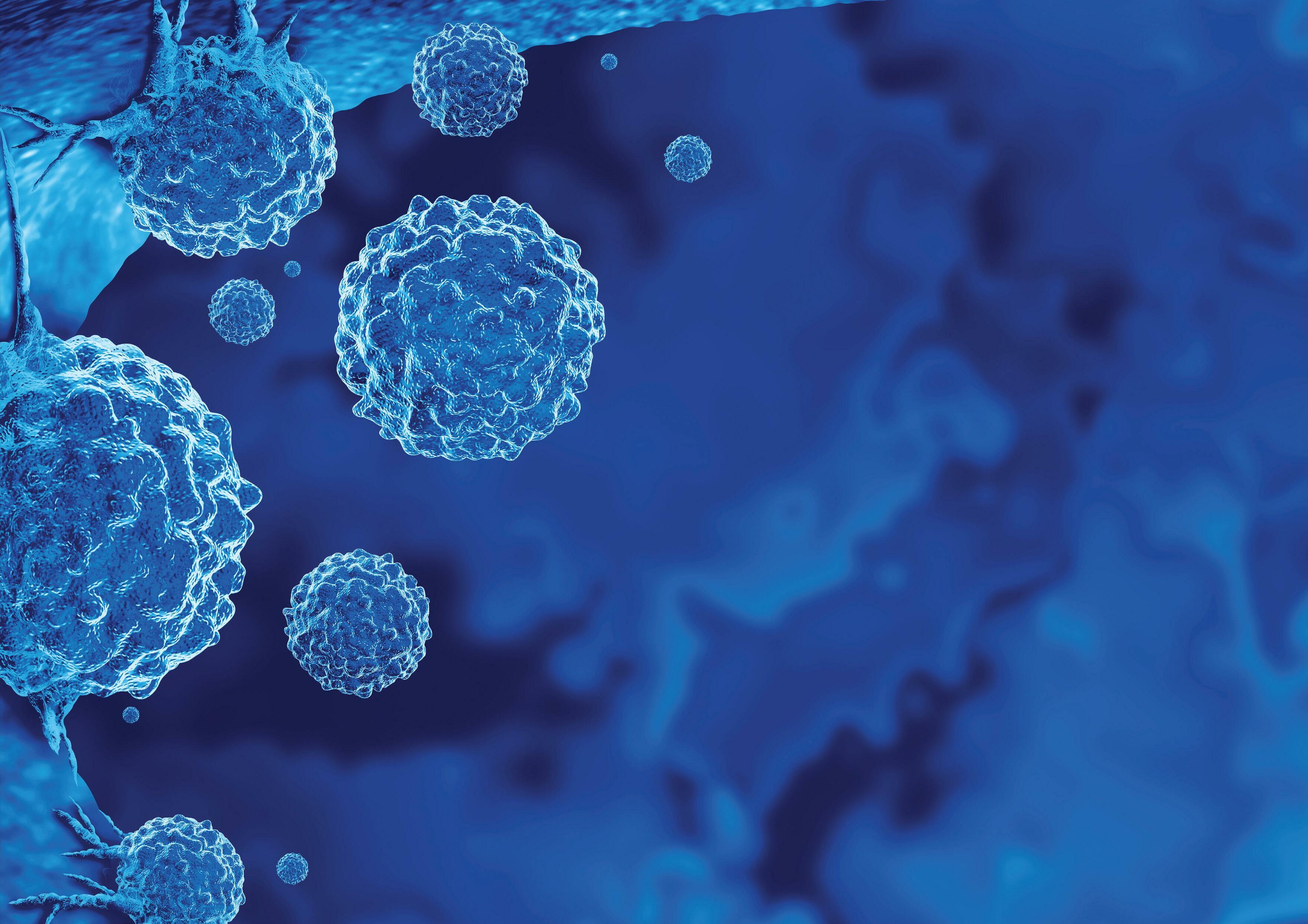
TEAM MEMBERS Dr Jesse Armitage Dr Bree Foley Dr Alison McDonnell Dr Lucy Barrett Ms Katherine Audsley Ms Hannah Newnes Ms Samantha Barnes Mr Kai Plunkett TELETHON KIDS INSTITUTE AND UNIVERSITY OF WESTERN AUSTRALIA CAREER DEVELOPMENT FELLOWSHIP $421,748 2014–2017 Photo: iStock NHMRC 10 OF THE BEST 18
‘The defining moment for me, the thing that really decided me on pursuing cancer research as a career path, came after I received a phone call from a lady whose husband was dying from cancer,’ said Dr Waithman.
‘She had a young family and, as a father of four children myself, I immediately identified with their circumstances.
‘I was deeply moved and had a “Eureka” moment as I realised that I had a unique opportunity to make a difference.’
Cancer is the leading cause of death by disease in children, and Dr Waithman’s team focuses on cancers that particularly affect this age group. These include:
• Leukaemia – the most common cancer affecting children 6 and the second most common cause of cancer-related death,7 and
• Melanoma – the deadliest form of skin cancer8 and one of the most common cancers among Australian adolescents and young adults.9
With support from an NHMRC Career Development Fellowship, Dr Waithman and his team have been developing a personalised cancer immunotherapy which offers the potential to harness the body’s own natural immune defences to fight cancer.
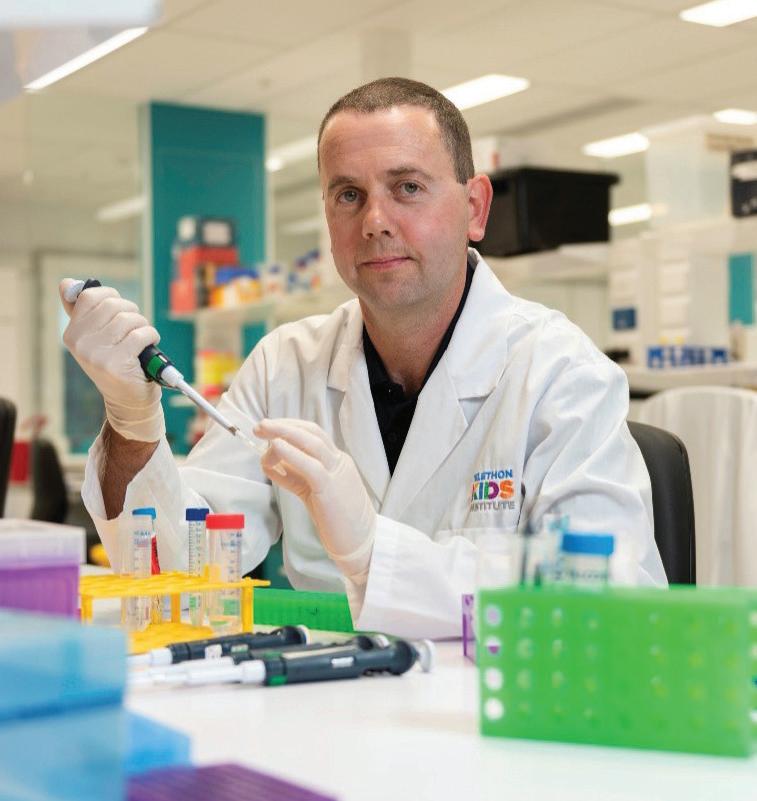
‘Cancer cells can remain dormant for prolonged periods but this phenomenon has traditionally been poorly understood because, when cancer cells are asleep, it is very difficult to identify them,’ Dr Waithman explained.
‘My collaborators and I developed a platform to study such dormant cancers, enabling us to show that tissue-resident memory T cells are key drivers of cancer dormancy.
‘These T cells act like a security guard for cancers, surrounding them and keeping them under control so they can’t escape and grow. By harnessing the power of these T cells, we have the potential to keep a wide range of cancers in a dormant state for decades, or even indefinitely.
‘My team has also identified the immune cell types responsible for stimulating T cell immunity to cancer. Based on this knowledge, we have developed several strategies enabling us to engage this immune axis with greater success to improve cancer control. It is anticipated this research will improve cancer vaccination and adoptive cell therapy protocols.
‘Cancer immunotherapy as a discipline is delivering promising and vital alternative therapies for both adults and children in our efforts to control and cure cancer,’ Dr Waithman said.
‘However, immunotherapies on the whole provide vastly different outcomes between patients and cancer types. A number of key questions about why this might be, and how immunotherapy’s potential can be maximised, still remain.’
NEXT STEPS
Dr Waithman and his team aim to leverage these novel discoveries in the next phase of their research.
‘A key goal of our future research is to train immunologists to use advanced genomic data science to extract deep insights into the mechanisms governing disease states and to tailor therapeutic approaches accordingly.’
6 ‘Cancer Council and childhood cancers’, Cancer Council website
7 ‘Blood cancer facts and figures’, Leukaemia Foundation website
8 ‘Melanoma Overview: A Dangerous Skin Cancer’, Skin Cancer Foundation website
9 Australian Institute of Health and Welfare 2018. Cancer in adolescents and young adults in Australia. Cat. no. CAN 110. Canberra: AIHW.
19
Photo supplied by Telethon Kids Institute
IMPROVING CARER WELLBEING AND EMPOWERING INDIGENOUS COMMUNITIES
Associate Professor Dina LoGiudice
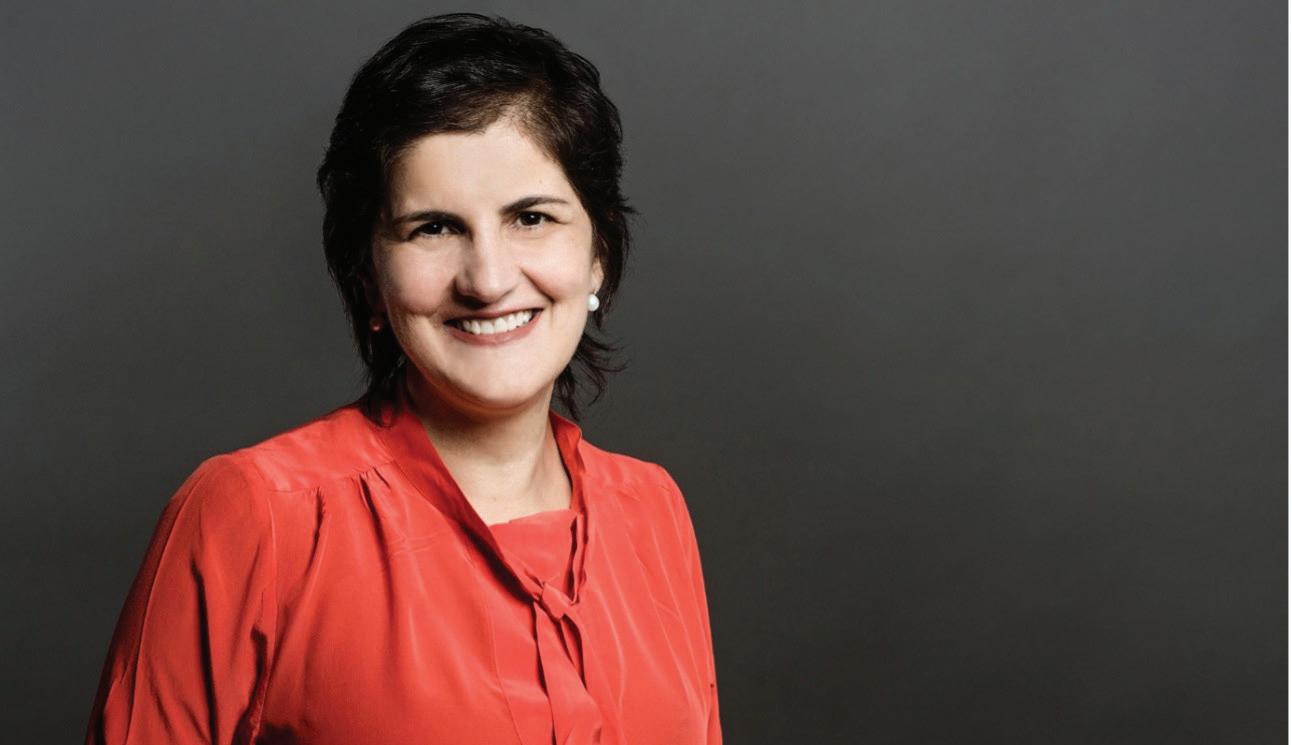
Associate Professor Dina LoGiudice is a geriatrician and clinical researcher with a special interest in dementia and ageing well. For close to two decades, she has been studying the impacts of ageing and dementia in Aboriginal and Torres Strait Islander communities.
‘Older Aboriginal people play a vital role in the health of their communities, including providing leadership and support, holding cultural rights and responsibilities for the maintenance of connections to country and caring for extended family,’ Associate Professor LoGiudice said.
Rates of dementia are three to five times higher in Indigenous communities compared to their non-Indigenous counterparts.10
Associate Professor LoGiudice conducted research in the Kimberley region of Western Australia in collaboration with colleagues from the University of Western Australia. She found that frailty, dementia and other conditions associated with age are highly prevalent and occur at an
earlier age in Aboriginal and Torres Strait Islander people than their non Indigenous counterparts.11
Using a participatory research approach, Associate Professor LoGiudice has described the importance of building the capacity of remote Aboriginal caregivers as a community collective to improve carer wellbeing. This approach focuses on empowering Aboriginal carer support workers and Aboriginal community carers to identify carer wellbeing priorities and enact community informed actions to make effective change.
‘Aboriginal carers are often referred to as hidden carers. Many do not self-identify with the word carer or are not recognised as carers by service providers,’ said Associate Professor LoGiudice.
‘Many reported that being a carer was difficult and affected their health, but also that it was an important cultural responsibility to look after Elders who had previously cared for family and the community.’
With the assistance of NHMRC Project Grant funding, Associate Professor LoGiudice and her team developed the ‘Strong Carers Strong Communities: Keeping Kimberley Spirit Strong’ project to support carers living in remote Aboriginal communities in the Kimberley. By identifying
and addressing carers’ unmet health needs, the project aimed to foster empowerment, improve psychological wellbeing and reduce carer strain.
‘Support for Aboriginal carers requires an empowering, holistic and community-led approach – employing, training and empowering Aboriginal carer support advocates within the community.’
Associate Professor LoGiudice’s team drew upon this community-led approach to empower carers within the Kimberly region. Community members were employed as co-researchers and participants were encouraged and supported by researchers to act as community advocates.
‘The carers formed carer support groups and utilised art and media to raise awareness and educate their community and youth on the important role of respecting and caring for their older people,’ she said.
10 Smith K et al. ‘High prevalence of dementia and cognitive impairment in Indigenous Australians’, Neurology, 2008, 71(19):1470-1473. 11 Ibid.
NHMRC 10 OF THE BEST 20
Photo supplied by Associate Professor Dina LoGiudice
The project was evaluated by culturally adapted measures of empowerment, depression and stress among caregivers. Associate Professor LoGiudice notes that depression and empowerment are inversely related. At project completion, rates of depression in participant-carers were halved.
‘A healthy and happy carer will enable the person they care for to remain on Country, with community, for longer,’ said Associate Professor LoGiudice.
NEXT STEPS
Associate Professor LoGiudice continues to advocate for integrated care models for Aboriginal people in aged care that are delivered by community controlled organisations, where possible.
In 2021, Associate Professor LoGiudice was awarded a $3 million NHMRC Centre of Research Excellence Grant for her project ‘On TRACK (Teaching, Research And Community Knowledges)’ to generate knowledge about culturally safe approaches to optimise the wellbeing and quality of life of Aboriginal and Torres Strait Islander people at risk of or living with dementia.

Professor Leon Flicker Dr Kate Smith Professor Dawn Bessarab Professor David Atkinson Associate Professor Melissa Lindeman Professor Melissa Haswell Professor Christopher Etherton-Beer Ms Roslyn Malay Dr Cathryn Josif Dr Zoe Hyde Ms Myra Pindan Mr Mark Pindan Ms Christianne White
OF
PROJECT GRANT $1,818,404 2013–2017 Photo: iStock 21
TEAM MEMBERS
UNIVERSITY
WESTERN AUSTRALIA


nhmrc.gov.au































 Photo supplied by Associate Professor Shannon Simpson
Photo supplied by Associate Professor Shannon Simpson












